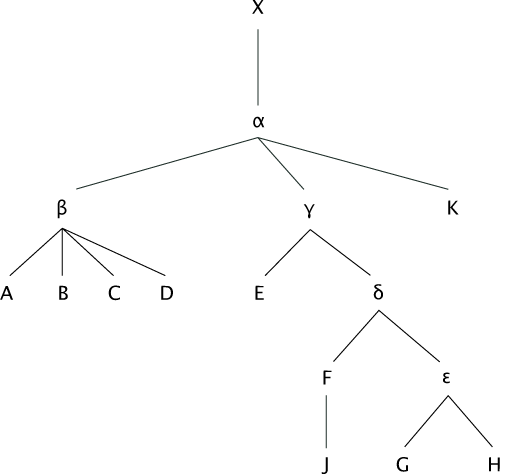Hyparchetype
A hyparchetype (or subarchetype) is a lost state of the text which in the stemma is situated below the archetype, either directly under the archetype or, possibly also, in a lower position in the stemma. In fig. 1, α is the archetype, and β and γ are hyparchetypes. While the archetype is the closest we can get to the original, hyparchetypes are the ancestors of related groups of one or more preserved manuscripts. Like the archetype, hyparchetypes are often denoted by Greek characters in the stemma, especially in Classical philology.
Paul Maas proposed the term hyparchetype exclusively for reconstructed variant-carriers (1960: 8), i.e. the first level below the archetype; in fig. 1 these would be only β and γ, while for example δ and ε would not be regarded as hyparchetyes. He calls 'variant' only readings directly below the archetype between which no mechanic choice is possible.
From Greek ὑπό 'under; below' and ἀρχέτυπον (see archetype). The variant form with sub – the Latin synonym for ὑπό – is not recommended, but is sometimes found in the literature.

Fig. 1. A re-drawn and simplified version of the stemma published in Maas (1960, p. 7).
Cf. also codex interpositus.
Reference
– Maas, Paul. 1960. Textkritik. 4th ed. Leipzig: Teubner. – 1st ed. 1927.
In other languages
DE: Hyparchetyp (Subarchetyp)
FR: hyparchétype (subarchétype)
IT: iparchetipo (subarchetipo)
OH